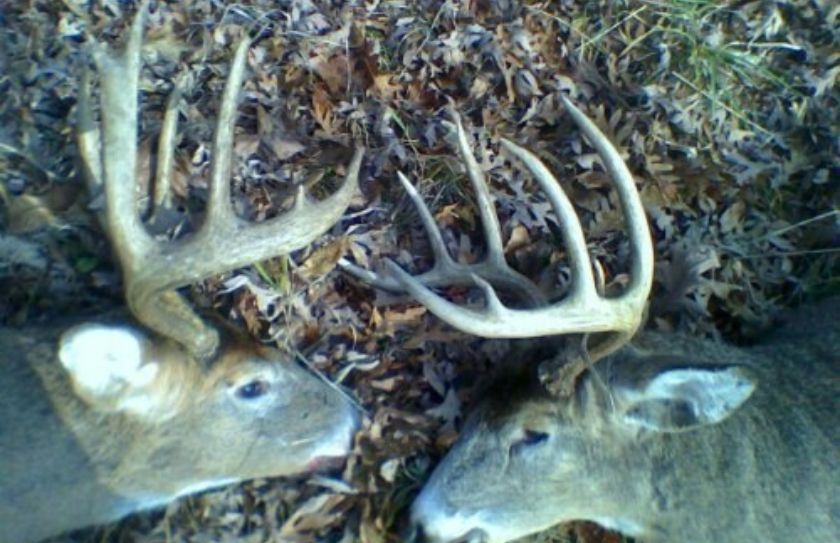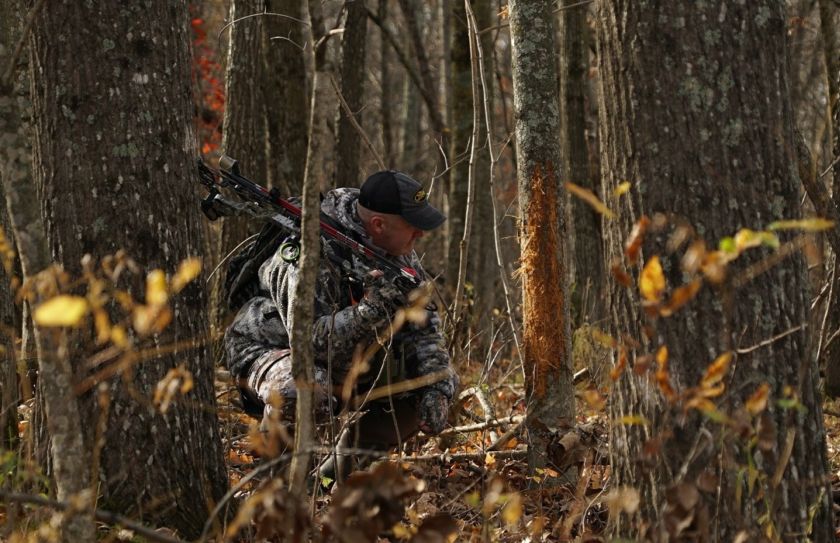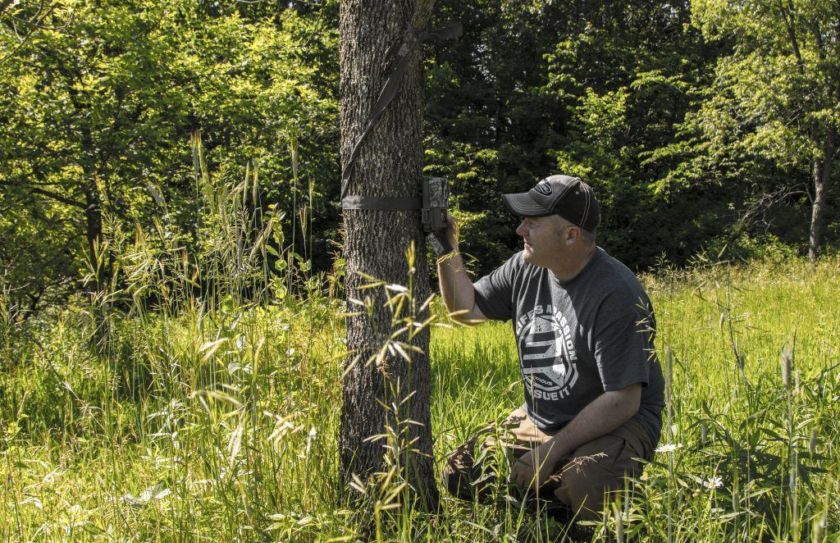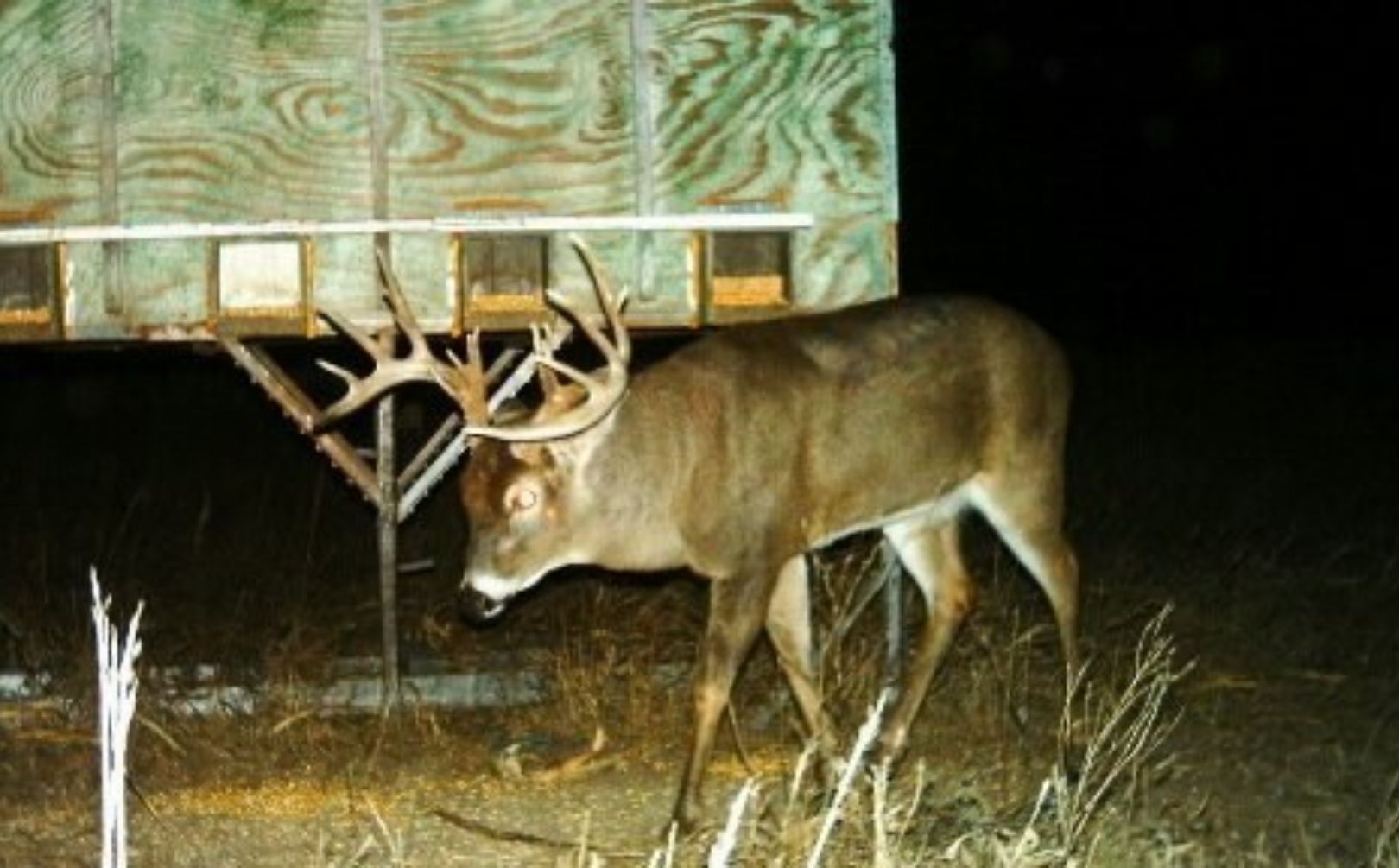
"Ground Shrinkage"; when it comes to targeting mature bucks, I have unfortunately experienced it! In 2012 I had a monster buck approaching head-on, and all the methods of how to age a buck went flying through my head. His shoulders were giant, his body was a tank and his antlers weren't too bad either. As it typically does when hunting from a treestand in the woods, the buck was within shooting distance in less than 10 seconds. It was October 20th, the shot was true, he fell within eye sight and my 2012 WI bow season was over. The only problem? I believe he was 3.5 years old, one year shy of my personal harvest goal for my WI hunts on the particular land we were leasing. His body was just so dang deceiving and at 221 pounds dressed weight, he was and still is, the largest bodied whitetail I have ever shot. He was also a Pope and Young class 10 point, but just not quite the age I liked to target at the time. Huge body but a young buck.
*Make sure to check out my whitetail book series including, "Whitetail Success By Design" and "Food Plot Success By Design", to help you find mature bucks this hunting season!
Even know body characteristics are the best way to age a buck, the body can also be very unreliable within most real world hunting encounters. But whether you are hunting, judging trail cam photos or checking out a buck's age after the harvest, it is important to know the age class of that monster that you just harvested. As hunters continue to push the envelope for creating the ultimate herd on the lands that they hunt, the priority of keeping tabs on the local buck age structure doesn't seem to be decreasing any time soon! Here are my top 5 methods that you can use to age a buck this season.
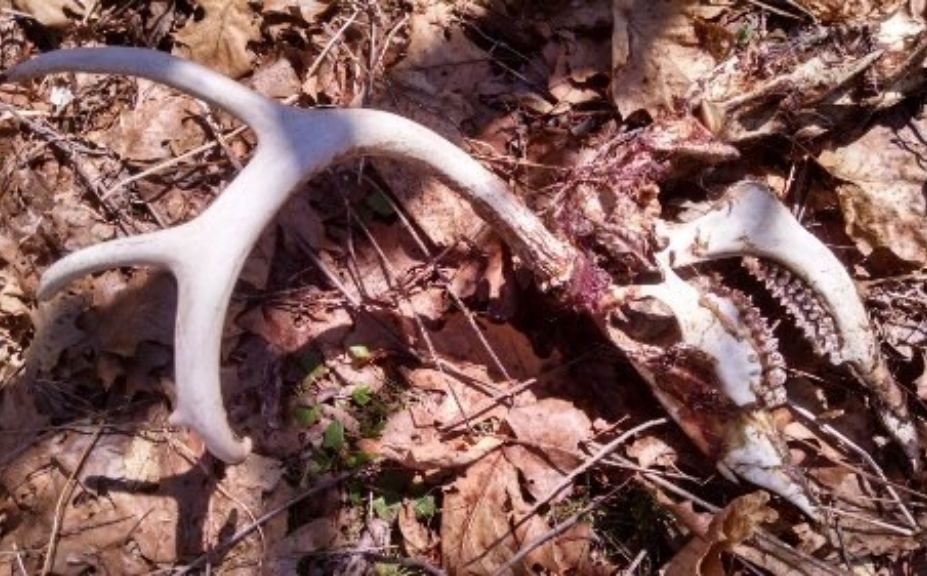
5. Jawbone Estimation
Jawbone estimation for bucks is the #1 method for State provided check-in stations for mass data collection, but is also the least accurate. If you check out the chart below that is provided by the Quality Deer Management Association (QDMA), you can see that the accuracy for using the jawbone to age known-age bucks plummeted steadily from 79% for 2.5 year olds, to 18% for 6.5 year old bucks. Even 3.5 year old bucks only reflected an accuracy level of 60%, while 4.5 year old estimates dropped below 45%. Something to note was that the study was completed by Dr. Mickey Hellickson and others at Texas A&M University, with a panel of 5 wildlife biologists completing the process of estimation. Dr. Mickey Hellickson is one of the most noted Whitetail Research Biologists in the country, so you can bet the credentials for the 5 wildlife biologists was at a very high level. I don't think it is a stretch to say that the % of accuracy for each age class, for the 263 jawbones studied within the process, reflected higher than average results compared to most State game agencies. Yet, the results were still highly inaccurate. Although the process of using the jawbone (tooth wear and replacement) to reflect a buck's age may be the best method for use in mass data colletion efforts, how reliable really is it?
4. Cementum Annuli
Using the same chart shown above, the method of using incisors from 116 of the known age deer revealed a much higher level of accuracy, with a drop of 70% for 2.5 year old bucks, to 46% for 6.5 year old bucks. Although the results were much better than the accuracy levels reflected by the process of jawbone estimation, they still were not perfect.
3. Antler Size and Attitude
Wow...I can just hear the purests gnashing their teeth at this one! But wait, try to take a step back and ask yourself, could using antler size to estimate a buck's age between 2.5 and 6.5 years of age be any worse than the accuracy level reflected by the process of jawbone estimation? I don't think so. In fact I would be willing to suggest that if you found a hunter that was familiar with the patterns of antler growth in a given area, and you compared their estimations to that of someone familiar with jawbones in the same region, the hunter guessing antler size would reflect a higher accuracy the majority of the time. This is particularily true when you consider that most hunters are typically aging bucks up to 4.5 or 5.5 in the best case scenarios.
I personally have experienced that using the antler size to estimate a buck's age is better than jawbone estimation in most cases, when comparing those individuals familiar with tooth and antler wear in a give region. However when you add the attitude of a buck the accuracy jumps to a very high level! A major factor for using antlers to age a buck is that you use this method when the buck is still alive, on the hoof and approaching your treestand. But along with beam length, coloration and antler mass, the attitude of a buck can really help you narrow down your estimation.
Mature bucks are slow, calculated and methodical in their movements. They often reflect a very bad attitude, when compared to the happy-go-lucky whims of younger bucks. Is that buck approaching your stand location 4, 5, 6 or 7? Does it really matter? By using the antler size in combination with a buck's attitude, those age classes are all shooters in my book, and can easily be discovered with a 2 second glance.
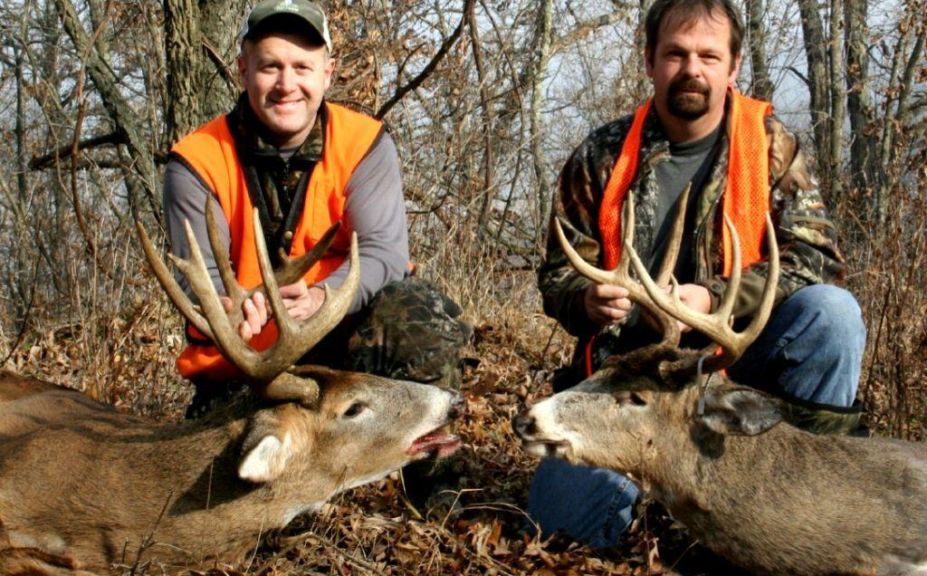
*Can you make a split second decision in a real-world hunting situation? If not you should really learn how! For more tips on estimating age while in the field this season, check out "Field Judging Antler Guide".
2. Body Characteristics
There are many online sources to teach hunters and landowners how to judge a buck by using it's body characteristics of neck, chest, back, stomach, etc. In fact you can actually find a very high level of accuracy by using the body to estimate age, right down to nearly the exact age. I do like this method, and it is great to apply to trail cam photos or for lengthy observations in the field. However, in many real world hunting situations a hunter has no where near enough time to study a buck's body to determine the age class.
Where this method shines is in front of your computer screen, or from long distance observation through a quality set of optics. Often your discoveries of age can be carried to the field while attempting to accurately carry out a harvest decision. But I have to warn you from experience that often in the frantic few seconds that are offered to make a harvest decision on a cruising monster, you can easily make an incorrect decision. I have had my incorrect decision go both ways on bucks I thought that I individually recognized, but the majority of the time I have actually guessed on the low side. In 2007 I thought I was shooting a real nice 12 point that we had on the land, which we thought was a 4 year old. Instead, when I found my buck that I shot under clear blue skies at 10:15am from less than 15 yards, he was the monster 15 point 5 year old we were after. I simply saw him chasing does from 50 yards out and closing fast, made a split second decision that he was mature, and tried to make a good shot. For 2 minutes I pulled back, let down and pulled back again before making the shot. Did I study him? Only to make sure that I could place my pin on his chest, while ignoring everthing else. I find that when I get to the point of "kill mode", I don't have enough surplus concentration to donate to any other thought than, "see mature buck, shoot mature buck".
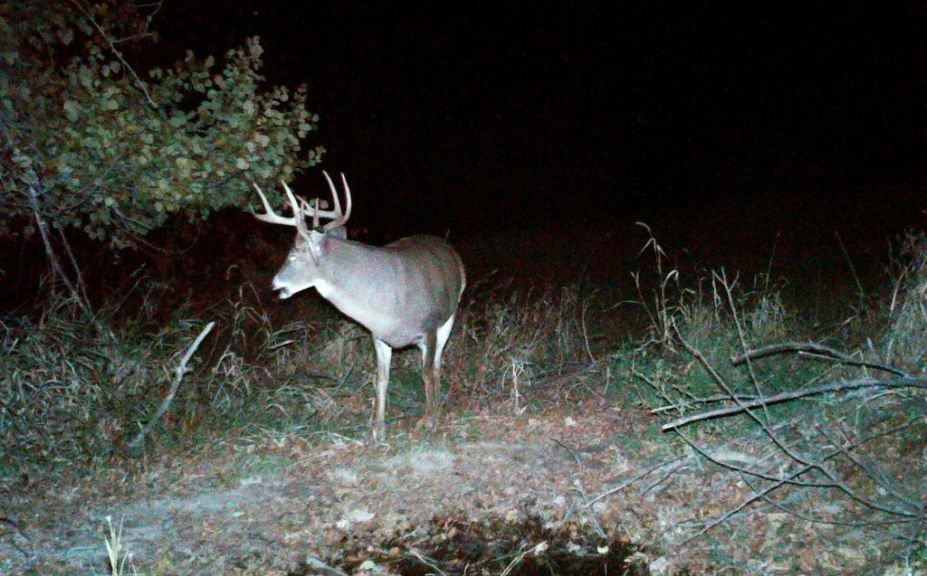
*How much time do you have to estimate a buck's age, grab your bow, ready for the shot and take the shot? Typically 10 seconds or less. For other methods that you can use to make sure you can make the shot in time, try reading about the "10 Second Bowhunting Rule".
1. A Personal Following
The best way to age a buck is by personally following his growth through the use of trail cams and individual sightings. I have a great passion for following a buck's growth as he enters maturity, while following particular bucks for as many as 5 years of pictures and up to 8 years of age throughout my hunting career. Better yet when you get to know them on a personal level, you will find that their home ranges, rubs and scrapes narrow down their travel patterns enough to be nearly certain that the mature giant cruising towards you, is the buck you have been after for years.
Conclusion
Although online and printed materials to age a buck often revolve around body characteristics, I urge you to make an attempt to formulate a solid plan of attack for when the moment of truth arrives in the field. Each method has it time and place, for example the Cementum Annuli process is a great way to age bucks within a hunt club, in particular when you can compare the findings to the real world personal following of individual bucks. For in the field judgement calls in less than 5 seconds, I highly prefer the antlers and attitude method, and for the ulimate level of precision during lengthy field or deer cam observations the body characteristics can offer a very high level of precision. Is there one method to age a buck that is better than the others? I have experienced that the answer to that question really depends on the circumstances, while I personally travel through a year round quest to avoid the dreaded potential of ground shrinkage.
